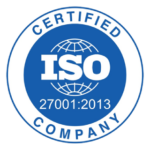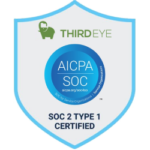Top Small Language Models for Agentic AI Solutions Development
Small Language Models, or SLMs are primarily shorter and lighter versions of LLMs, enabling enterprises to build cost-effective agentic AI solutions. It has gained popularity in the last few months. What is Many AI startups in India have reported growing demand from small & mid-sized businesses for automating workflows like customer support, engagement, recruitment, etc. Even one report from Deloitte claimed that many firms prefer buying AI solutions (e.g. SaaS / agentic AI tools) rather than building in-house, likely because using off-the-shelf or lighter models is cheaper, faster, and less risky.
So why are SLMs dragged into this picture? What is the point of considering SLMs for developing agentic AI solutions?
The answer lies in two terms: cost savingsand latency & performance.
The more autonomous / agentic the system, the more calls, inference cost, latencies, and infrastructure overhead come in. If a smaller model can do most of the required work with acceptable accuracy, then huge savings and risk reduction result. Now, imagineif your model has to respond interactively or in background tasks, lower latency matters. Smaller models tend to be faster in inference. Also, in many deployments (mobile devices, edge devices, on-premises systems), hardware constraints force smaller, efficient models.
In this blog, we are going to explore the top small language models for developing agentic AI solutions, understand the engineering patterns, their limitations, some real-world use cases, facts, and stats on SLMs reported by tech giants.
Let’s start with the basic question.
What are Small Language Models, or SLMs?
Small language models (SLMs) are similar to LLMs, but with fewer parameters and simpler architectures. This is making them more efficient, cost-effective, and suitable for resource-constrained environments like mobile devices and embedded systems.
SLMs are trained on smaller, more specific datasets to gain specialization in particular tasks, offering higher accuracy and faster processing for targeted applications compared to the broad capabilities of general LLMs. This specialized nature also allows for greater data privacy, as SLMs can be run locally on devices without requiring continuous cloud connectivity.
What do we mean by “agentic AI” + “small models”?
Agentic AI build the AI systems that can plan, execute and reason over multi-step tasks, use tools or APIs, operate semi-autonomously.
SLMs are “small” or “lightweight” models that typically fall in the range of ~1-12B parameters (sometimes up to ~20B), often with optimizations (quantization, adapters, efficient architectures) to run with lower latency, cost, and often on-device / edge.
There has been a significant move in the industry toward hybrid systems: SLMs for specialist / repetitive / structured tasks, LLMs for fallback / open-domain reasoning.
Top SLMs & Small Models Used in 2025 for Agentic Workflows
As we have gained the basic knowledge on SLMs, let’s explore the top SLMs that are being used or considered for agentic AI use cases:
Gemma (by Google DeepMind)
Size or Parameter Scale:Variants around 2B-7B parameters in recent versions.
Notable Features / Why Used for Agents: Lightweight versions of Gemma are useful for tool use / domain-specific tasks; more efficient than heavier models. Useful as “default” small agents.
Limitations / Trade-offs:Lower expressivity, less “hallucination robustness” on open domain tasks; fewer capabilities for ultra-long context unless specially engineered.
Qwen / Qwen3 / Qwen2.5 (Alibaba)
Size or Parameter Scale:Dense and sparse variants; small‐parameter models (4-8B etc) available.
Notable Features / Why Used for Agents: Multiple variants allow picking trade-offs; used for multimodal or instruction soon. Good community support; a lot of flexibility.
Limitations / Trade-offs:Larger variants still heavy; smaller ones may underperform on general reasoned tasks; sensitivity to prompt design; latency if not optimized.
LLaMA 3.1 / LLaMA / TinyLLaMA / MobileLLaMA (Meta / community)
Size or Parameter Scale:Variants around 2B-7B parameters in recent versions.
Notable Features / Why Used for Agents: Lightweight versions of Gemma are useful for tool use / domain-specific tasks; more efficient than heavier models. Useful as “default” small agents.
Limitations / Trade-offs:Lower expressivity, less “hallucination robustness” on open domain tasks; fewer capabilities for ultra-long context unless specially engineered.
FYI: Parameter sizes are typically published or community-reported; the actual effective compute / memory requirements depend heavily on quantization, context length, inference engine, etc.
Engineering patterns and what makes SLMs work better for agents
From the theory and our hands-on experience, we have identified these recurring patterns enabling SLMs to be effective in agentic use cases:
Guided decoding + schema / output constraints
Agentic AI solutions built with SLMs require structured output (e.g. JSON), enforce function / tool invocation formats strictly. It helps avoid hallucination or invalid tool usage.
Uncertainty / verifier cascades / fallback
We recommend using confidence estimation: if SLM is uncertain, either route to a larger LLM or use an ensemble. This keeps quality high.
Tool / API wrappers / registries + function calling
Rather than expecting the model to produce perfect code, define tools with fixed schemas/functions, and have the model call them. Many SLMs are good enough to drive tools.
Modular / specialist architectures
We think that rather than 1 big model doing everything, it is better to have smaller specialist AI agentsor adapter modules that focus on narrower tasks (parsing, tool selection, planning).
Edge and quantization optimizations
SLMs work better compared to large LLMs for low-latency, low-power deployments, quantization/compression, efficient inference engines (TensorRT, vLLM, etc.), sometimes on device.
Heads up for Business Decision Makers on SLM Watch-out Points & Limitations
- Long-horizon planning / open domain reasoning still often needs larger models.
- Safety/robustness can suffer due to poor inputs. We have seen errors in tool calling, hallucinations, and context loss if inputs are noisy.
- Fine-tuning/prompt engineering costis non-negligible. For making SLMs reliable in production needs careful engineering, validation, and often tools or schema enforcement.
- You should consider context length constraints. Many SLMs have shorter max context; for agents that need long memory or to process long documents, this can hamper performance unless special mechanisms are used.
Key Metrics & Trade-Offs to Consider When Choosing an SLM for Agentic AI Systems
For every agentic AI project, we prefer to have a deep due diligence session before starting. When enterprises are uncertain about choosing SLMs over LLMs for their agentic AI projects, in the due diligence phase, we suggest considering the following metrics for a successful and value-focused outcome:
- Schema / Output Validity:If your tool calls / function calls expect JSON / defined schema, invalid outputs cause failures. SLMs excel here if constrained.
- Function / Tool Execution Reliability:How often the model calls the right tool, uses correct inputs, avoids false positives / hallucinated tool calls.
- Latency (p50, p95): Agents often need fast responses, especially if interactive or edge deployed. Smaller models help reduce latency.
- Token Cost / Inference Cost:In a system where many sub-tasks happen, cost per token / cost per successful task adds up. SLMs can drastically reduce cost.
- Energy / Compute Footprint:For deployment on smaller hardware, or cost-sensitive settings (cloud / edge), energy matters; SLMs shine here.
- Fallback Behavior & Confidence Estimation:When the SLM is uncertain, you want mechanisms to switch to a more capable model or verify.
- Robustness under Distribution Shift:If input types or domains vary, how much does the performance drop? Larger models tend to generalize better; SLMs may need domain adaptation / fine-tuning.
Our Suggested Configurations / Architectures Based on Use Cases
We would like to share some use case-oriented architectures/patterns that are successful in our recent projects, which could help you squeeze good performance from SLMs in agentic settings:
SLM default + LLM fallback
Use a small model by default; if certain confidence thresholds or criteria are triggered (e.g. schema violation, tool output invalid, uncertainty high), call on a larger model. This helps balance cost vs quality.
Schema-first prompting / guided decoding
Force model to output in strict JSON / template forms, validate them, possibly reject or regenerate if invalid. Using function calling APIs or validator tools helps. Reduces format failures.
Adapter / LoRA / task specialization
As in MapCoder-Lite, use lightweight adapters for planning, retrieval, coding, debugging roles. It improves performance without blowing up the size.
Distillation/trajectory supervision
Distilling from larger, expert models (or using supervision / correction) especially helps the smaller model in tricky tasks or in maintaining consistency. MapCoder-Lite used “trajectory distillation” and supervision to improve format reliability.
Verifier cascades
After generating output (especially for structured / tool-call outputs), run lightweight verifiers or secondary checks. If output fails, regenerate or escalate. It helps ensure safety/correctness.
Efficient inference tooling
Quantization, efficient runtimes (vLLM, TensorRT-LLM etc.), possibly edge optimized deployments. If you’ll deploy off powerful servers, this matters a lot.
Our Findings on Use Cases or Scenarios Showing Demand in Practice
- Businesses in a regulated sector (Like; healthcare, finance) want to automate document processing but can’t send data to third-party cloud APIs. They either build or procure a small model to run on-premises.
- Enterprises with hundreds of agents / microservices (for customer support, internal tooling, etc.) find that using a large LLM in each spot is expensive. They shift to task-specific small or mid-size models.
- Startups (especially in regions with lower compute infrastructure or high cloud costs) prefer lighter models to deliver AI value affordably.
Some Useful Stats, Facts & Survey Findings Sharedby Tech Giants
Report by Deloitte, India– State of GenAI (4th Wave, 2025)
- Over 80 %of Indian organizations are actively exploringautonomous agents (agentic AI).
- 70 % indicate a strong desire for using GenAI for automation.
- 50 % said multi-agent workflows (autonomous sub-agents) are a key focus.
The report shows business leaders are looking for solutions that can run parts of workflows autonomously, which tends to favor lighter, cheaper models or modular agents rather than monolithic, extremely large ones.
Edge AI Statistics 2025 Report by All About AI
- Around 97 %of US CIOs include Edge AI in their 2025-26 roadmaps.
- Over 90 %+ of enterprises increasing edge AI budgets.
- Edge AI allows savings in latency and energy (e.g. latency below 10ms, energy savings 30-40 %).
We agree that edge use implies smaller models (SLMs) or at least more efficient models, since heavy large models are harder to deploy on-device or in latency-/bandwidth-constrained settings.
Cost-vs-Performance Comparisons Reports by Dria.coand TechBullion
- Infrastructure / operational cost of self-hosting a SLM (e.g. Mistral 7B) is much lower than running large model APIs or renting high-end hardware. (One example: monthly self-hosting cost ~$300-400 vs thousands for large LLM usage)
- Using “medium or small” models or hybrids can reduce inference / deployment cost (or API gets) by large factors (e.g. 80-90 % cost savings in many “straightforward” tasks) when performance is adequate.
We have seen that decision makers are strongly sensitive to cost, especially ongoing OpEx. Showing big savings with minimal performance trade-offs drives interest in SLMs.
After the intense technical discussion and insights, we need to get answers for some common business asks to understand the value proposition of SLMs in terms of ROI. Let’s jump into the FAQ section.
Are small language models the future of agentic AI?
Yes,Small Language Models (SLMs) are emergingas a core part of the future of agentic AI,but not the whole future. The real trajectory is hybrid architectures; ecosystems where many small, specialized, efficient models work together (or under the supervision of larger ones) to create scalable, cost-effective, and context-aware AI agents.
What is the core idea behind adopting the SLMs?
The Core Idea is Agentic AI ≠ One Giant Model
Agentic AI isn’t just about “intelligence.” It’s about autonomy, orchestration, and efficiency. By saying this, we meant models that can plan tasks, decide what tools to use, act on structured goals, and collaborate with other agents or systems.
For such architectures, massive LLMs (70B–500B) aren’t always optimal, because:
- They’re expensive
- Slowin multi-step reasoning
- Overkillfor repetitive structured work
- And hard to scaleacross thousands of concurrent agent threads
That’s where SLMs come in.
Why are small language models becoming foundational?
First, Agentic AI needs distributed intelligence. Agentic systems are multi-agent ecosystems – planners, retrievers, verifiers, and executors.
Instead of one huge model doing everything, it’s better to have multiple small oneshandling tasks in parallel.
Second, Agentic AI is inherently multi-step (each step = model call). Large models make this prohibitively expensive. For enterprises building hundreds of agents per process, small models make agentic AI financially viable. We back our statement based on the following four metrics:
- Inference Cost
Running large models (like 70B parameter LLMs) can be up to 10 times more expensive in compute and cloud usage compared to smaller ones. In contrast, SLMs reduce inference costs by 80–90%, making it financially viable to deploy multiple AI agents simultaneously. This is especially critical for enterprise-scale automation, where hundreds or thousands of micro-agents operate in parallel. - Latency
Large models introduce noticeable delays during inference, particularly in multi-step reasoning tasks common to agentic systems. SLMs, being lighter and faster, deliver real-time responsiveness, enabling agents to make decisions, fetch data, and execute actions almost instantly. This responsiveness is key for dynamic workflows such as operations monitoring, fraud detection, and conversational automation. - Energy Use
Large LLMs typically consume over 1 kilowatt per server, which directly impacts operational costs and sustainability goals. By contrast, small models operate efficiently at under 300 watts, allowing for greener, energy-efficient AI deployments. This makes them ideal for enterprises pursuing both performance and environmental responsibility in their AI strategy. - Deployability
While large models are restricted to cloud environments due to their heavy infrastructure needs, small language models can be deployed across edge devices, on-premises servers, and hybrid setups. This flexibility opens the door to privacy-first, low-latency AI applications; from industrial IoT and retail analytics to mobile assistants and on-device copilots. All are running close to where the data is generated.
Third, the growing demand for on-device & edge agent deployment. We can clearly see that future agents will run in industrial IoTenvironments, on mobile or AR devices, and within enterprise intranets(as data privacy and latency matter).
SLMs can run locally, ensuring sustainability with privacy (no data leaves the device), instant response (no cloud delay), and resilience (works even offline).
This is why Apple, Google, Meta, and Alibaba are investing in edge-tuned SLMs (like Gemma-2, Mistral-3B, MobileLLaMA, and Apple’s On-Device 3B).
What does the future of Agentic AI systems look like in 2026?
We predict the future as hybrid intelligence, not size wars. The future of agentic AI is not going to be “small vs large”; it will be smart orchestration of small + large.
As per the recent surveys, reports, and our practical experience, this is the practical and role-based equilibrium emerging by 2026:
- Large models will be used for high-level reasoning, goal translation
- SLMs (1–12B) will be used for plan execution, tool use, and structured tasks
- Micro models (<3B) are leveraged for real-time / local sensing, data summarization
- Tiny SLMs / rule-based models will be responsible for output validation, error checking
Conclusion
As the AI ecosystem matures, one fact is becoming increasingly clear; intelligence is no longer about size, it’s about strategy. The era of depending solely on massive, centralized LLMs is giving way to a more practical, scalable, and cost-efficient future led by Small Language Models (SLMs).
Enterprises are realizing that bigger isn’t always better. In workflows that demand speed, compliance, privacy, and domain-specific intelligence, SLMs consistently outperform large general-purpose models in business value delivery. The proof is everywhere, global research forecasts tripling adoption rates by 2027, while leading technology firms and consulting enterprises are already re-architecting their AI stacks around lightweight, task-tuned models.
At ThirdEye Data, we believe this shift represents not a downgrade in capability, but a refinement of intelligence. Our focus on building agentic AI systemspowered by modular SLM architectures enables businesses to automate complex processes, deploy AI closer to their data, and achieve enterprise-grade outcomes at a fraction of the cost.





